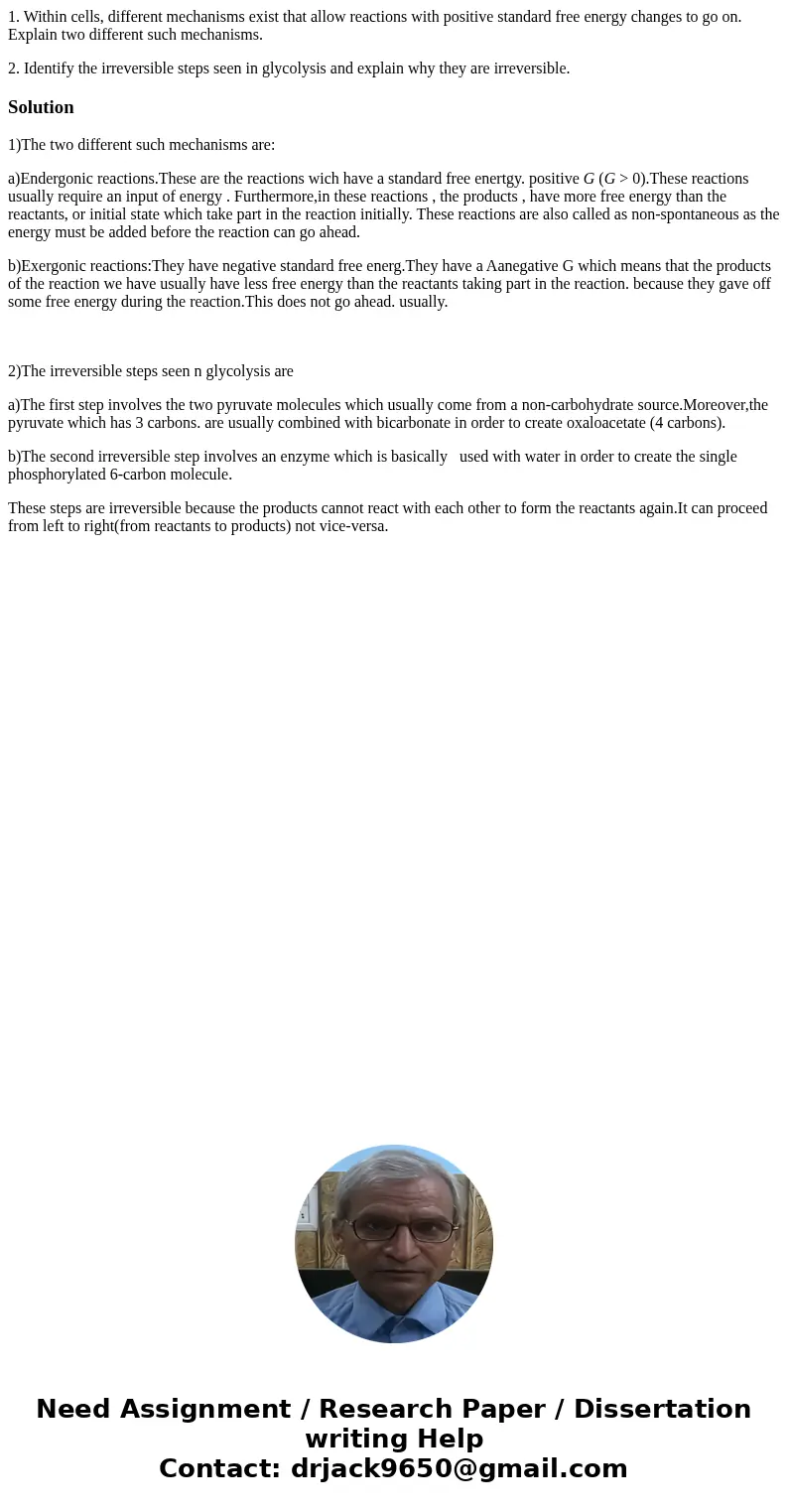1 Within cells different mechanisms exist that allow reactio
1. Within cells, different mechanisms exist that allow reactions with positive standard free energy changes to go on. Explain two different such mechanisms.
2. Identify the irreversible steps seen in glycolysis and explain why they are irreversible.
Solution
1)The two different such mechanisms are:
a)Endergonic reactions.These are the reactions wich have a standard free enertgy. positive G (G > 0).These reactions usually require an input of energy . Furthermore,in these reactions , the products , have more free energy than the reactants, or initial state which take part in the reaction initially. These reactions are also called as non-spontaneous as the energy must be added before the reaction can go ahead.
b)Exergonic reactions:They have negative standard free energ.They have a Aanegative G which means that the products of the reaction we have usually have less free energy than the reactants taking part in the reaction. because they gave off some free energy during the reaction.This does not go ahead. usually.
2)The irreversible steps seen n glycolysis are
a)The first step involves the two pyruvate molecules which usually come from a non-carbohydrate source.Moreover,the pyruvate which has 3 carbons. are usually combined with bicarbonate in order to create oxaloacetate (4 carbons).
b)The second irreversible step involves an enzyme which is basically used with water in order to create the single phosphorylated 6-carbon molecule.
These steps are irreversible because the products cannot react with each other to form the reactants again.It can proceed from left to right(from reactants to products) not vice-versa.

 Homework Sourse
Homework Sourse